
Henry II the Pious was Duke of Silesia and High Duke of Poland as well as Duke of South-Greater Poland from 1238 until his death. Between 1238 and 1239 he also served as regent of Sandomierz and Opole–Racibórz. He was the son of Henry the Bearded and a member of the Silesian Piast dynasty. In October 2015, the Roman Catholic Diocese of Legnica opened up his cause for beatification, obtaining him the title of Servant of God.
Leszek II the Black, was a Polish prince of the House of Piast, Duke of Sieradz since 1261, Duke of Łęczyca since 1267, Duke of Inowrocław in the years 1273-1278, Duke of Sandomierz and High Duke of Poland from 1279 until his death.

Sandomierz is a historic town in south-eastern Poland with 23,863 inhabitants, situated on the Vistula River near its confluence with the San, in the Sandomierz Basin. It has been part of Świętokrzyskie Voivodeship since its transfer from the Tarnobrzeg Voivodeship in 1999. It is the capital of Sandomierz County. Sandomierz is known for its preserved Old Town, a major cultural and tourist attraction which the President of Poland declared a National Monument of Poland in 2017.
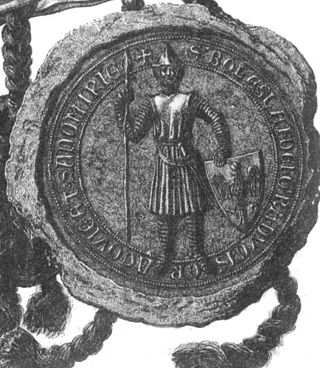
Bolesław V the Chaste was Duke of Sandomierz in Lesser Poland from 1232 and High Duke of Poland from 1243 until his death, as the last male representative of the Lesser Polish branch of Piasts.

Hyacinth was a Polish Dominican priest and missionary who worked to reform women's monasteries in his native Poland. He was a Doctor of Sacred Studies, educated in Paris and Bologna.
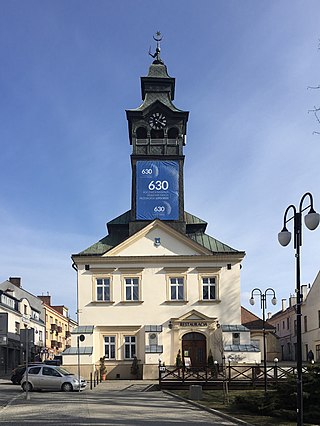
Przeworsk is a town in south-eastern Poland with 15,675 inhabitants, as of 2 June 2009. Since 1999 it has been in the Subcarpathian Voivodeship, and is the capital of Przeworsk County. The ancient Przeworsk culture was named after the town.
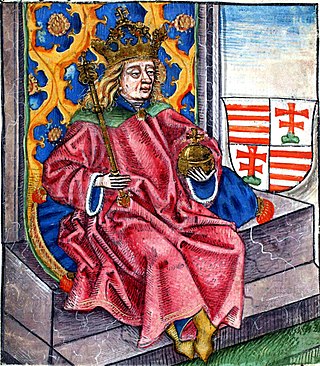
Béla IV was King of Hungary and Croatia between 1235 and 1270, and Duke of Styria from 1254 to 1258. As the oldest son of King Andrew II, he was crowned upon the initiative of a group of influential noblemen in his father's lifetime in 1214. His father, who strongly opposed Béla's coronation, refused to give him a province to rule until 1220. In this year, Béla was appointed Duke of Slavonia, also with jurisdiction in Croatia and Dalmatia. Around the same time, Béla married Maria, a daughter of Theodore I Laskaris, Emperor of Nicaea. From 1226, he governed Transylvania as duke. He supported Christian missions among the pagan Cumans who dwelled in the plains to the east of his province. Some Cuman chieftains acknowledged his suzerainty and he adopted the title of King of Cumania in 1233. King Andrew died on 21 September 1235 and Béla succeeded him. He attempted to restore royal authority, which had diminished under his father. For this purpose, he revised his predecessors' land grants and reclaimed former royal estates, causing discontent among the noblemen and the prelates.
The Battle of Zawichost (1205) was fought between Roman the Great of Galicia-Volhynia and Leszek I the White of Lesser Poland, along with his brother, Konrad I of Masovia. After declaring war and invading Lesser Poland, Roman and his forces (druzhina) were ambushed by the Poles in the vicinity of Zawichost by the Vistula (Visla) River. In the tumult that followed, Roman was killed and the Polish victory would lead to Poland's growing power and the weakening of Rus'.

Henry the Bearded was a Polish duke from the Piast dynasty.
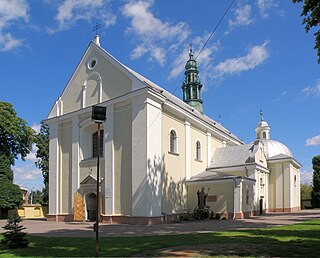
Skaryszew is a town in Radom County, Masovian Voivodeship, Poland, with 3,922 inhabitants (2004). The town is located on the Kobylanka river, and belongs to the historic region of Lesser Poland. In the past it was an important urban center of northern Lesser Poland, with town charter granted to Skaryszew as early as 1264.
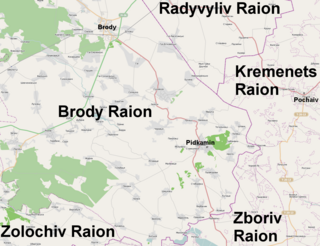
Pidkamin is a rural settlement in Zolochiv Raion, Lviv Oblast, western Ukraine. It is located near the administrative border of three oblasts, Lviv, Rivne, and Ternopil. Pidkamin hosts the administration of Pidkamin settlement hromada, one of the hromadas of Ukraine. Population: 1,895.
The Roman Catholic Diocese of Cumania was a Latin-rite bishopric west of the Siret River from 1228 to 1241. The lands incorporated into the diocese had been dominated by the nomadic Cumans since about 1100. Catholic missions began after Andrew II of Hungary granted Burzenland to the Teutonic Knights in 1211. After Andrew expelled the Knights from the territory in 1225, Dominican friars continued the Cuman mission. Robert, Archbishop of Esztergom baptized Boricius, an influential Cuman chieftain, two years later.

Kurzelów is a village in the administrative district of Gmina Włoszczowa, within Włoszczowa County, Świętokrzyskie Voivodeship, in south-central Poland. It lies in historic Lesser Poland, approximately 7 kilometres (4 mi) north-west of Włoszczowa and 52 km (32 mi) west of the regional capital Kielce.
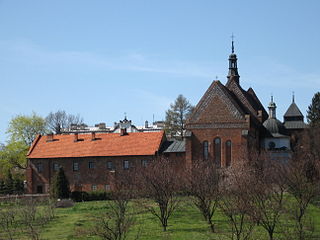
The Church of St. James in Sandomierz, also known as the Shrine of Blessed Sadok and 48 Dominican martyrs, Monastery of Dominicans, Shrine of Our Lady of the Rosary, is one of the oldest brick churches in Poland and the second oldest Dominican monastery in Poland. This church is a unique indirect form of Romano-Gothic style. The Roman ceramic decorations on the outside gabled walls are unusual and beautifully done. The stained glass windows inside are particularly beautiful, and date from 1910 to 1918.

Sadok and 48 Dominican martyrs from Sandomierz were Roman Catholic, Dominican martyrs killed by Mongols during the Second Mongol invasion of Poland in 1260. As homage to the deaths of these martyrs, Polish Dominican friars were given special dispensation allowing the usage of red belts in their habits.
The sack of Sandomierz during the first Mongol invasion of Poland took place on 13 February 1241. It ended in the victory of the Mongol forces, who captured the city and burned it, massacring the residents.
The sack of Kraków during the first Mongol invasion of Poland took place on either 22 or 28 March 1241. It ended in the victory of the Mongol forces, who captured the city and burned it, massacring most of its residents.

The second Mongol invasion of Poland was carried out by General Boroldai (Burundai) of the Golden Horde in 1259–1260. During this invasion the cities of Sandomierz, Kraków, Lublin, Zawichost, and Bytom were sacked by the Mongols for the second time.

The third Mongol invasion of Poland was carried out by Talabuga Khan and Nogai Khan in 1287–1288. As in the second invasion, its purpose was to loot Lesser Poland, and to prevent Duke Leszek II the Black from interfering in Hungarian and Ruthenian affairs. The invasion was also part of the hostilities between Poland and Ruthenia; in 1281, the Poles had defeated a Mongol force near Goslicz which had entered Duke Leszek's territory in support of Lev I.

The Duchy of Sandomierz was a district principality and a fiefdom of the Kingdom of Poland. It was formed in 1138 from the territories of the Kingdom of Poland, following its fragmentation, that was started by the testament of Bolesław III Wrymouth. The Duchy existed until 1320 when it was incorporated into the Kingdom of Poland. Its capital was the city of Sandomierz. The territory was centred around Sandomierz Land in the southeastern corner of Poland, between the rivers of Pilica, Vistula, San, and Dunajec.














